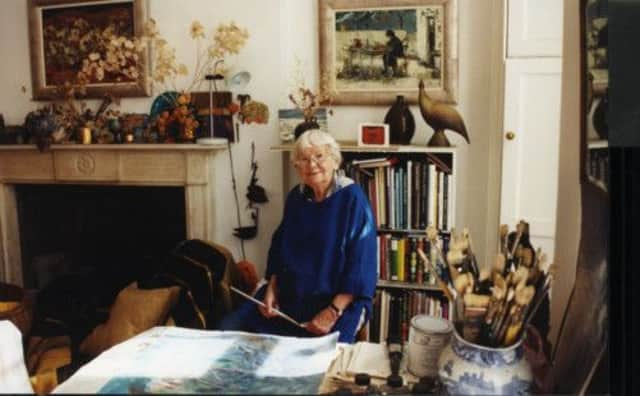Obituary: Perpetua Pope, artist and lecturer


A wide circle of people, of all ages, will be saddened to hear of the death of Pip Pope. When someone attains a good age, and Pip had just celebrated her 97th birthday, there are perhaps few to mourn; peers have passed away and the world has contracted. Not so for Pip; she was a conscientious friend with a warmth and openness that attracted all, regardless of age or profession.
She was a painter and many artists are numbered among her friends. To these she was generous, even deferential, and she admired and collected many others’ paintings.
Advertisement
Hide AdAdvertisement
Hide AdAbout her own work she was full of doubt, the kind of doubt not floated out to garner a compliment, but expressed as a real interrogation of the value of what she was doing; she was self-critical to a fault. She never doubted the importance of art, however, and along with friendship it was at the core of her being.
She was born in Solihull, Warwickshire, but to Aberdonian parents, and the family returned to Aberdeenshire for her to attend school and enjoy a rural upbringing which would feed her art for a lifetime. Her father was in business and was a perceptive and passionate art buyer, planting a seed for the future interests of his only daughter.
It was to Edinburgh College that she came for her further artistic education, and her diploma was interrupted by the war, during which she gave service in the Women’s Auxiliary Air Force (WAAF). Moray House and teaching came next and among several posts she was art mistress at Oxenfoord from where many girls became firm, long-term friends.
She eventually lectured on art at Moray House before she retired in 1973, always feeling herself to be a painter who taught rather than a teacher who painted. Her time at the college and the exciting milieu in the capital in the proceeding years were formative for her own practice.
Gillies, Maxwell and Penelope Beaton and then Joan Eardley and Earl Haig were inspiring painters. Travel also became important: to Cypress, Lebanon, the Peloponnese and Spain (where she once broke her ankle).
Within Scotland she worked at her cottage in the Borders at Carlops but accepted invitations to look at many new landscapes and garden subjects from Islay to Barra and Fife to Kinloch Rannoch.
She had exhibitions with the Scottish Gallery in 1956, 1963, 1975, 1978 and 1982, then showed regularly with the Open Eye and McAulay Galleries before a triumphant return to the Scottish Gallery for a 90th birthday show in 2006 and more new work in 2008 and finally in 2011.
At that time she gave an interview to Duncan MacMillan when she talked eloquently of how she immersed herself in front of the subject to try to catch the experience of feeling and looking in her painting. She had enjoyed the recent show organised by the National Galleries of Scotland, Van Gogh to Kandinsky; Symbolist Landscape in Europe, and felt a kindred spirit. The authors of the catalogue saw how these painters were “using nature to prompt and form and colour to suggest the enduring values and profound emotions of human experience”, a method and ambition Pip shared.
Advertisement
Hide AdAdvertisement
Hide AdShe worked in oil and watercolour, like many of the Edinburgh School, dividing her energies between the two media, never letting herself become stale or lapse into repetition.
She often attended painting classes and residencies with younger tutors when she might have been giving the master class. She will be remembered as a very good painter, occasionally brilliant but also as one of the most enduring and warmest personalities in the Scottish art world.